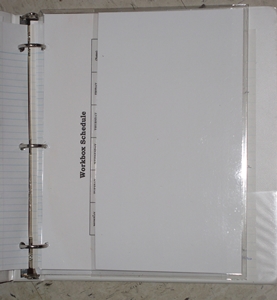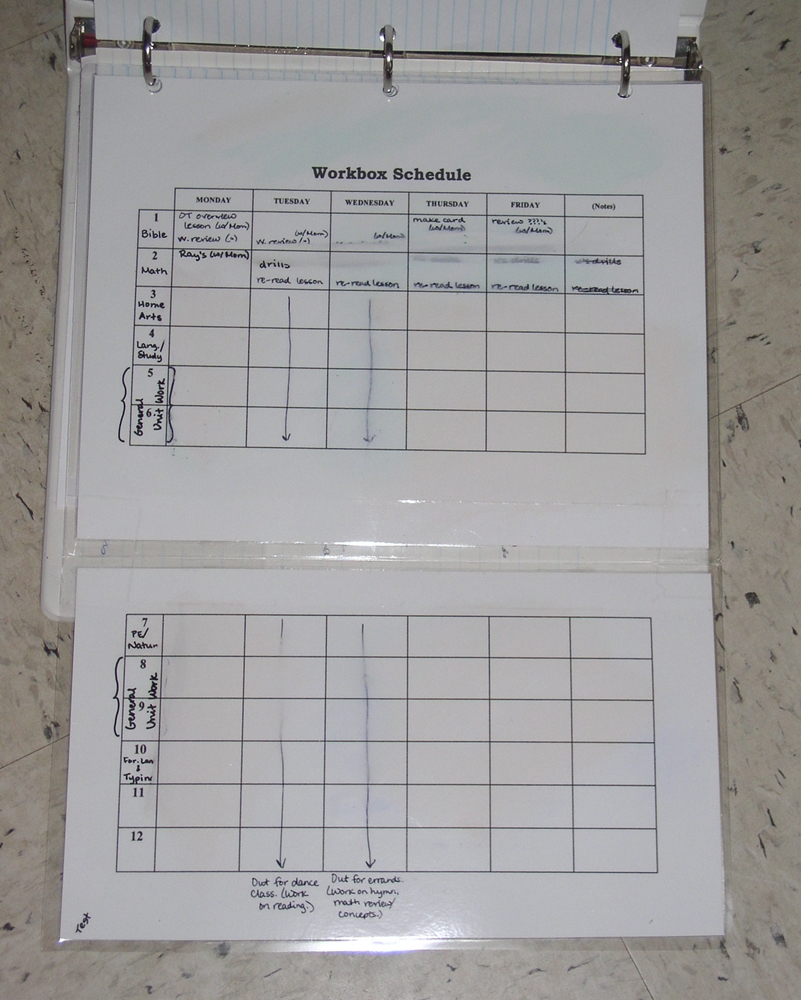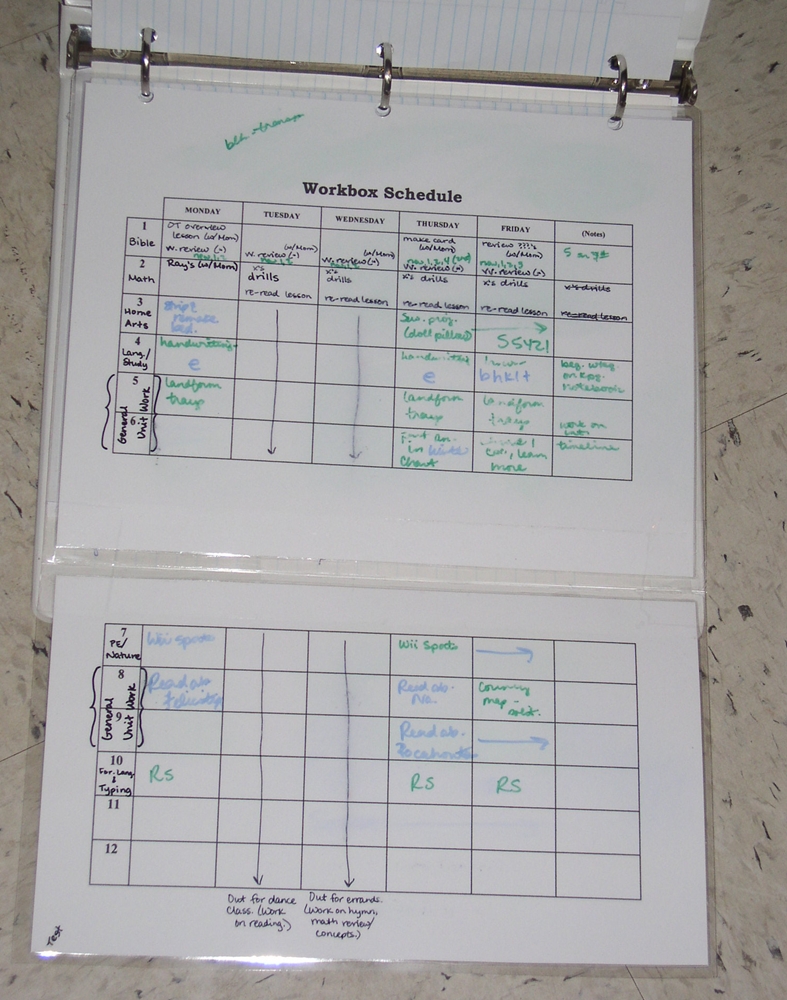Workboxes have been popping up all over the internet since Sue Patrick introduced them a few years ago. When I first got started, it took me forever to fill them. However, I quickly learned a few tricks. One helpful tool for me has been my Workbox Schedule Grid. I thought I’d posted it for you a long time ago, but apparently I never did!
(If you just want the file download, skip to the bottom. If you want my explanation, keep reading.)
This schedule grid is a pretty basic thing. There are rows for each workbox (up to 12), and columns for each day of the week. The laminated grid is printed on two sheets of paper so it’s easier to write on. They are taped together (I used clear packing tape) and the second one trimmed down so it fits into a 3-ring binder as a fold-out. General notes to myself (about the types of things that go into certain boxes on certain days) are in permanent marker. The weekly plan is jotted down in dry erase. In this manner, the whole week can be planned at once, and all I have to do in the evenings is physically place the items into the boxes (or bags, or folders, as the case may be).
Here is what it looks like inside my planning binder:
And once folded out, it looks like this (click if you need to see it larger):
With permanent marker, I write in my basic weekly “framework,” along with assignments that don’t change. (Please pardon the smeariness here. I was actually working in reverse to take these pictures for you. Again, you should be able to click to view the image larger.)
And then, on a weekly basis, I write in specific assignments. This might be assignments that change entirely, or specific notes – like lesson numbers – for assignments that are essentially the same – like math.
Get my grid.
Not that this is rocket science, but who wants to reproduce work that’s already been done? Get my Workbox schedule grid in PDF format.





This looks very similar to the Managers of their Homes, Managers of their Schools, and Managers of their Chores scheduling tools written and published by Steve and Teri Maxwell of titus2.com. While I do not homeschool, I am in the process of putting together a master schedule for my children and I using her Managers of their Homes book. I so wish the Managers of their Chores had been available to me when the kids were little…would have used it in a heartbeat!!! I take my hat off to those who put together and use a schedule such as this as while I am a compulsive note-taker, written schedule keeper (daytimer), and list maker, I am finding it a bit overwhelming to write “it ALL down.” I am getting through it, but it is slow at first which I hear is normal until you get the initial schedule done. Then it is a matter of tweaking it.
Lori, this is not a time-based schedule! (Personally, I hate MOTH. The idea is wonderful for those who can use it, but a micro-scheduled day like that totally stresses me out. I was never able to make it work for us.) The workbox “schedule” only tells me which school assignments to give my daughters, in which order. How long it takes them to do it varies greatly. One box might only take ten minutes; another might take close to an hour.
I did not think about that. That may be why I am having a hard time putting it all down. That, and with the kids activities in addition to school…I just really never know how long a certain thing is going to take. Definitely something to consider.
I found routines to be more beneficial for our lifestyle than a set schedule (although if you look through my books you’ll see “hopeful” schedules — but I used them only as guidelines to assure myself I had allotted adequate time (for me or the kids) to accomplish each task. And if you like MOTC, you might also appreciate The Everyday Family Chore System. We’ve been using and selling How-To-Do-It cards to coordinate with our system or other systems for over fifteen years. 🙂
just out of curiousity, how big are the squares for each box in the grid?
I am having a logistical problem with the grids being large enough to fit everything on yet small enough to fit on our boxes ( we use file boxes)
I don’t put this on our boxes, Jenny! This is just my own tool for planning. The whole chart, though, is just under the size of two sheets of printer paper. (I fold it – almost – in half, and it’s punched, so it fits in my binder.)
The grids I was putting on our boxes have much larger squares, but we didn’t write anything on them except numbers.